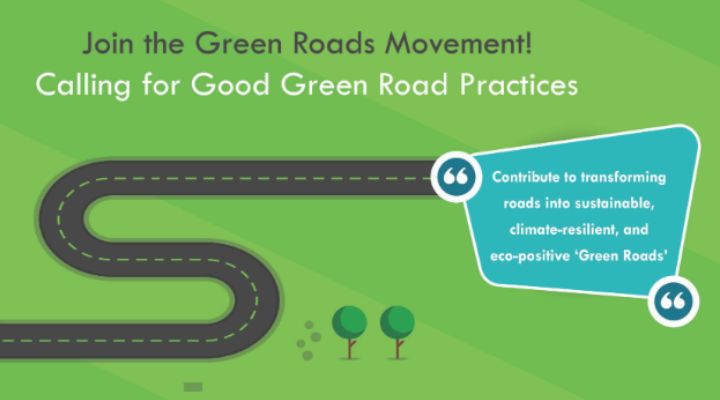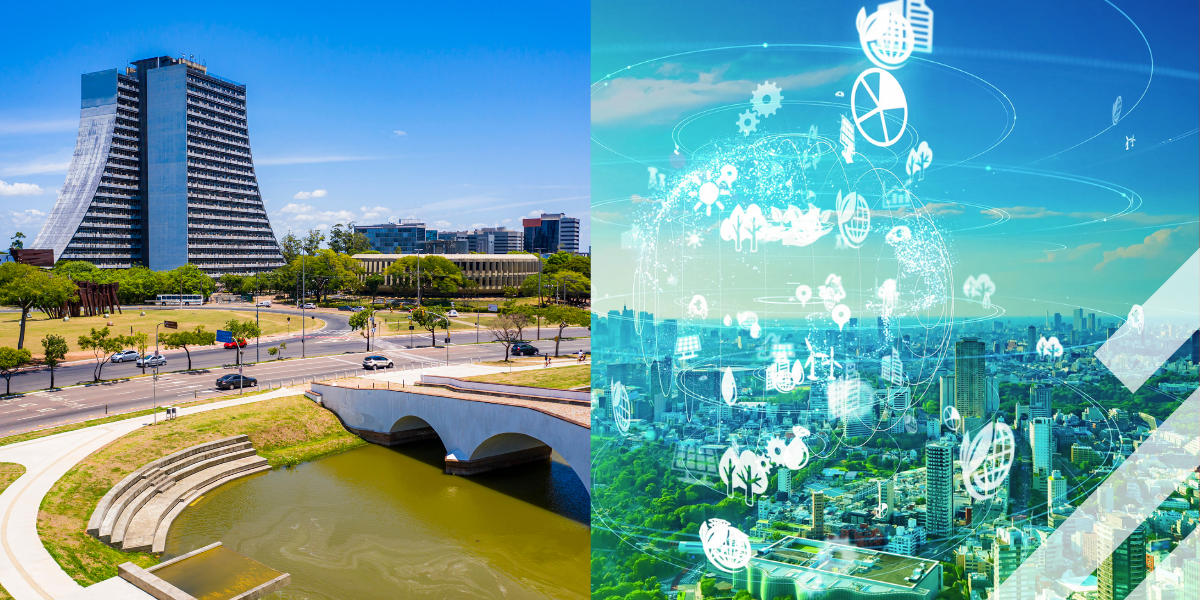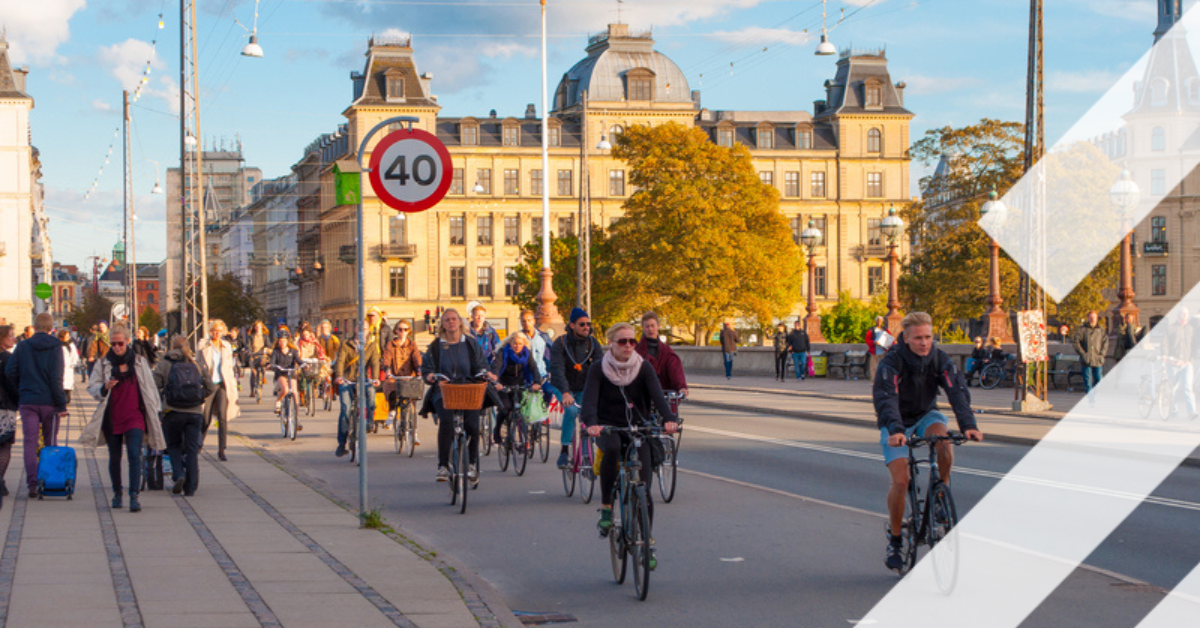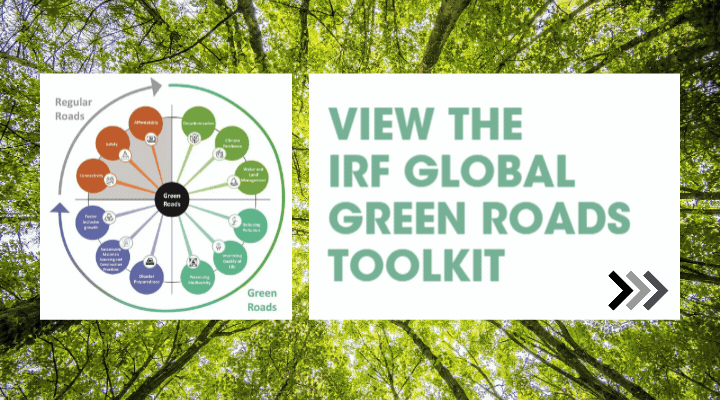Net Zero Roads: Paving the Way to a Sustainable and Green Future
Environmental sustainability goals: achieving them is of paramount importance to the transport sector, but how do we set about creating innovative strategies for achieving a net-zero future in the ever-evolving universe of roads and infrastructure?
At Intertraffic Amsterdam 2024 the IRF Global’s Nina Elter and Anastasia Deligianni of MetaMeta delivered a whole host of meaningful insights into what constitutes effective measures for minimising environmental impact through intelligent transportation policies and systems, thereby shepherding in a truly net zero future.
But what about Environmental, Social and Governance considerations (ESG)? What role does ESG play in shaping responsible infrastructure developments in the global development of resilient, eco-friendly, green roadways?
Intertraffic: In traffic infrastructure terms, what do you see as the basic tenets to achieving a net zero future?
Anastasia Deligianni (AD): There are many options in different states of road development. There are different things that can be done during the design phase. For example, design roads with low carbon specification, allow energy generation from roads, reduce road friction so that less fuel needs to be used. There are different things that can be done during the construction phase, too. For example, using local materials, using green cement; and also there are things that can be done during the operation of the roads. For example, the use of fuel-efficient vehicles and grids, a focus on mass transport, introducing electric vehicles and low emission zones. These are just a few examples. Another method that is very promising and is very easy to implement is roadside tree planting which, apart from reducing co2 emissions, also provides more benefits such as removing dust from the air and protecting crops and roadside communities, reducing soil erosion, slowing and absorbing road runoff, beautifying the roads and providing shade to road users.
Nina Elter (NE): I think first and foremost there needs to be a willingness to really address it, because right now, I think many of our transportation systems are in crisis. We have broken funding systems and not enough money to keep the roads fit for purpose. This means that vehicles really take a beating from damaged roads, so you have more costs and resources wasted there for unnecessary repair. Safety is an issue with people being hurt and dying on the roads every day and of course congestion contributes to bad air quality. Globally, the transport sector is the third largest source of GHG emissions, and it's predicted to more than double by 2050, so there's a lot that needs to be done. For example, I believe that taking a systems perspective is critical, because there's no perfect solutions and each decision can impact other parts of the system; but by anticipating impacts and considering different perspectives, we can make sure that the best possible tools for the task at hand are being selected. Overall, to have a chance to still achieve the emission targets we need to drastically change how, with what, on what and when we travel from A to B. This necessitates the need for a mind-set shift from the general public as to the transportation system’s value.
To achieve the emission targets we need to drastically change how, with what, on what and when we travel from A to B and that necessitates a mind-set shift
Intertraffic: How do you think ITS policies and strategies are able to help minimise the transport sector’s environmental impacts?
AD: At our session in April, we presented our Green Roads toolkit, developed in collaboration with IRF for the Asian Development Bank. This toolkit integrates best practices from various sectors, including decarbonization, climate resilience, land and water management and biodiversity preservation, among others. It features a wide variety of digital technologies showcasing practices like digital twins, ITS, smart ticketing systems and risk modelling. These digital applications offer significant benefits to the transport sector, including minimising environmental damage, reducing costs, optimising routes, shortening travel times, and lowering fuel consumption. With this field rapidly emerging, there is a significant opportunity to advance sustainable transport solutions.

We’re looking to bring in all the good practices from different agendas such as decarbonisation, to climate resilience, land and water management and biodiversity preservation among others.
NE: Ultimately, transportation systems are what connects us to opportunities, to our families… to everything. But it’s better data, continuous innovation and the use of those tech advancements like AI that really helps to unlock better insights. Those better insights in turn lead to better planning and maintenance, which in turn allows for better governance. Governance is not about oversight but proactive management of resources, strategic allocation of funds, and responsive policy-making that adapts to evolving environmental and social demands. You can optimise the resource allocation if you really understand what's happening on the network. And a lot of authorities currently don't understand what's happening on the network.
Intertraffic: In your presentation you talked about responsible infrastructure developments helping to create eco-friendly, resilient roadways. Can you give some examples of what you mean by responsible? And what might constitute irresponsible developments so that we can give both sides of the story?
AD: As Nina said before, roads are very important for connecting us to each other, to services and to economic opportunities. However, they also have significant negative impacts on the environment and nearby communities. The road sector is responsible for about 18% of global CO2 emissions. Roads alter landscape hydrology, often causing problems such as flooding, waterlogging, erosion and sedimentation. They also impact biodiversity, being the second-leading cause of wildlife deaths, and fragmented habitats, isolating wildlife populations. We have the potential to mitigate these negative impacts. The Toolkit offers a comprehensive list of best practices to minimise the adverse effects of roads and transform them into assets that are positive for both people and nature.
The Toolkit offers a long list of good practices to minimise the negative impact of the roads on different agendas and transform them into nature-positive assets.
NE: Before I address the “irresponsible” half of the question, let me just add one more thing to Anastasia’s list, which is to actively engage with the community to ensure that the infrastructure serves without causing harm. But if you think about irresponsible development, it's overlooking long-term environmental sustainability for short-term gains. An example of this would be using materials and methods that are outdated. In the US there are quite a few projects in place that bring communities back together. Because many moons ago, when the highway system was first built, it wasn’t uncommon for communities to be separated by a highway. By now we know that there are more sensible ways of planning and building the network.
Intertraffic: A net zero future is a product of a global effort towards sustainable and environmentally conscious road infrastructure and management, so how do you individually and collectively convince the rest of the transport industry to follow these good examples?
AD: To achieve a net-zero future, collaboration is essential. At MetaMeta, we partner with governments, academia, NGOs, practitioners, communities, and private companies to systematically change how roads are built and maintained, ensuring they contribute positively to more agendas than just connectivity. Beyond partnerships, also effective communication is crucial; sharing experiences across countries can inspire and drive progress. We focus on raising awareness about green infrastructure and developing tools and guidelines to support practitioners in implementing green roads. Additionally, increased funding for green initiatives is a significant incentive for governments. By incorporating green practices into their projects, they can access new funding sources, making green funding an attractive proposition.
NE: Education is an important piece to the puzzle. The IRF Global plays a critical role in identifying and sharing best practices and fostering dialogue among diverse international expert stakeholders to advance sustainable transport infrastructure. We for example have a range of active committees, eg ITS, Road Pricing and Road Safety. Under those committees we have Task Forces set up where expert groups come together to work on a specific topic, for example, Road Adaption for autonomous vehicles. The results are then turned into webinars, training programs, reports, and so on.
We keep our finger on the pulse of new developments and, for example, work with governments to determine their training needs. We have global and regional events where government, academia and private industry come together to exchange and collaborate.
Nina Elter is senior advisor, IRF Global and founder & CEO, NEWROAD Consulting UG, based in Germany.
Anastasia Deligianni is programme manager for the Green Roads for Water programme at MetaMeta Research in the Netherlands

Aprovechando el Marco de Desconexión de Scharmer para la Movilidad Sostenible en Brasil
28 November 2024

¿Qué hay para ti? Por qué los eco-recompensas y la teoría del empujón podrían transformar la forma en que viajamos
22 September 2025

Una perspectiva positiva para la movilidad sostenible en 2025
27 January 2025
Get up to speed on the mobility industry - our newsletter straight to your inbox!

